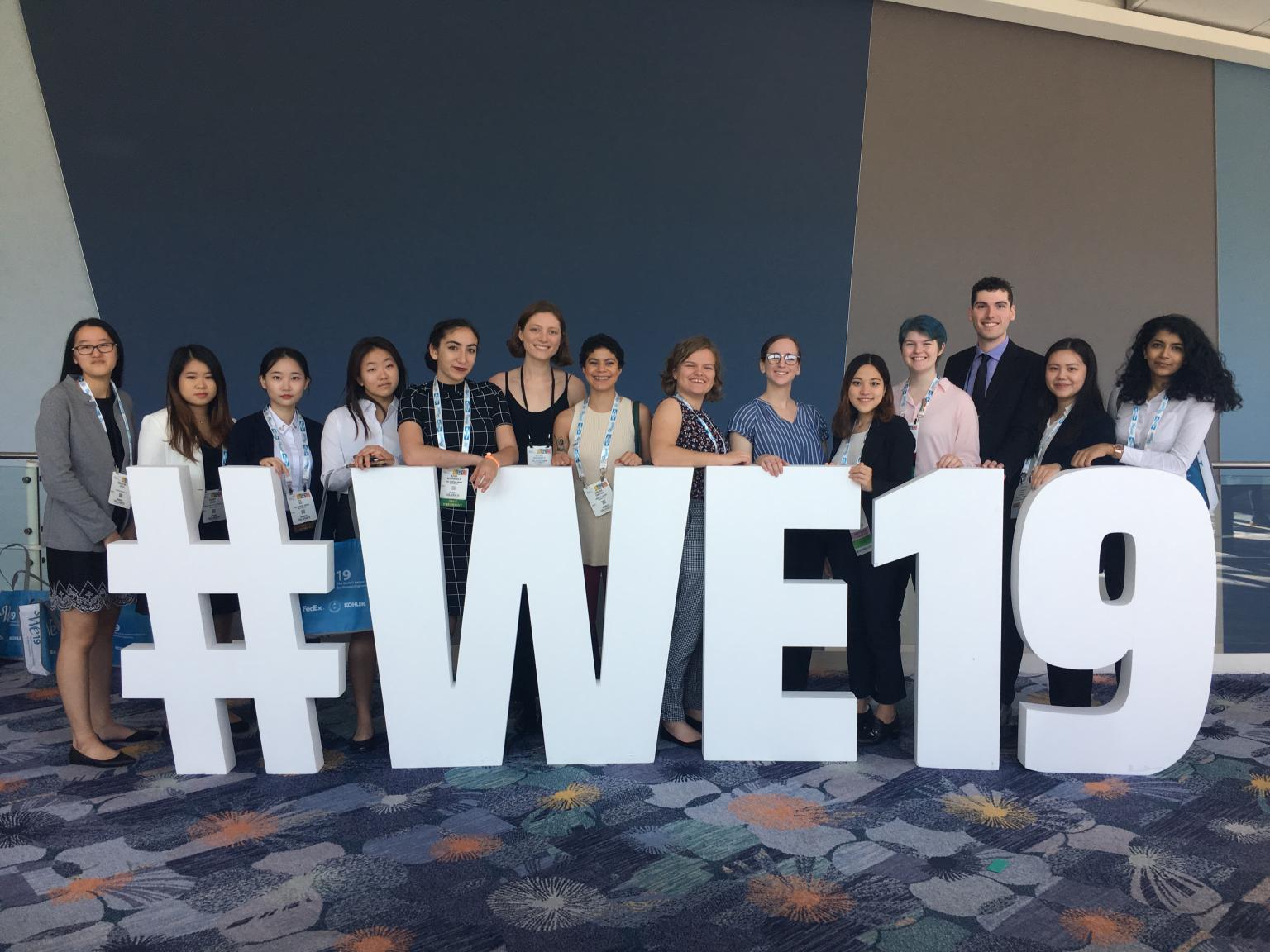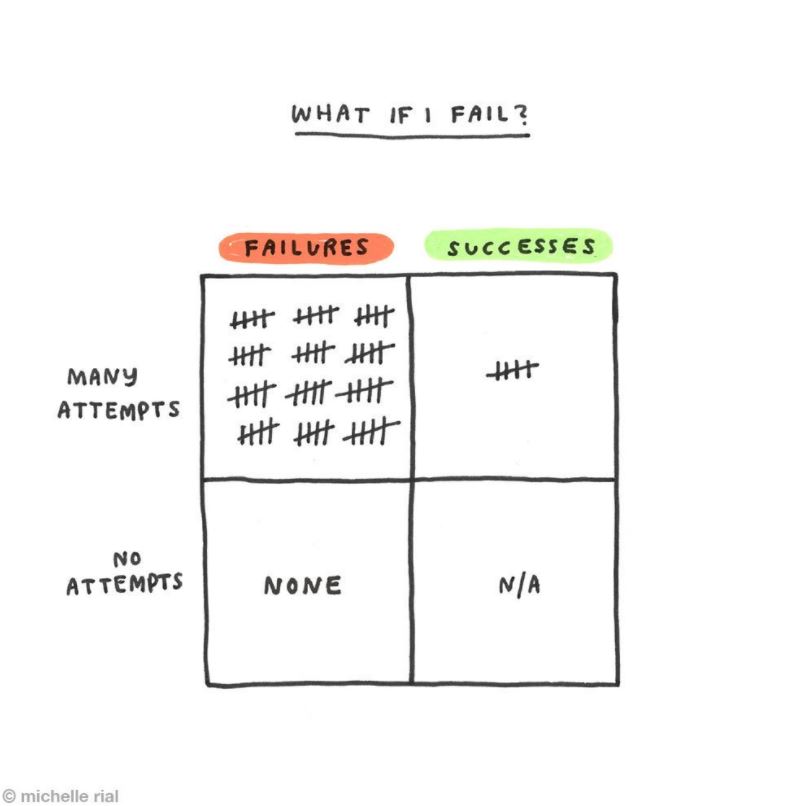I recently attended my first Society of Women Engineers National Conference in Anaheim, CA. I loved being in a space explicitly constructed for women engineers: I felt myself assuming everyone who I met was an engineer and found myself surrounded by absolute badasses.

Some of the badasses in my SWE section!
The conference was really eye-opening, both for my own personal development and for thinking about how we encourage and support women in STEM fields. So this post is about both what I learned about myself, and my thoughts on the larger women in engineering ecosystem.
Takeaway 1: Networking is about crafting and maintaining organic relationships.
I came into the SWE conference having secured an internship for Summer 2020 (see my last post). I decided to go to the career fair to learn about the work different companies are doing and make connections. It was really valuable – I met lots of awesome engineers doing really cool work, and talked to some companies I had never heard of before. (Here’s an unpopular opinion: it’s totally okay to not know anything about the company when you approach them at a career fair, so long as you’re interested in the work they’re doing and ask insightful questions. They’re there to market themselves to you). There are so many things I want to do and so little time to do them!
The overwhelming consensus about networking is that it’s uncomfortable because it feels very transactional. Previously, when I attended networking and recruiting events, I had been actively looking for a job, so it was understood there would be an “ask” at the end of the conversation – to follow up, to be referred, etc. Without that direction, I must admit it was a little awkward at first, but I am realizing that networking is about forming organic relationships with people and learning about them. Once I was able to tap into my genuine interest and ask lots of questions about their career choices, day-to-day, and where they see their industries going, I had much more interesting conversations and gained a lot of exposure to different career paths.
I’ve learned that this networking will allow me to create friendships that resonate in my professional and personal life. Having a network of supporters will help me keep on keepin’ on even when things get difficult, and I’ll provide that support in turn. It’s also incredibly important to keep up the connections you already had – I saw a lot of the friends I made at O4U, and reconnecting with them was one of the best parts of conference. I hope to see everyone I met at WE19 at WE20! (And yes, when it comes to jobs and internships, knowing people in the field can help you identify and secure opportunities you never thought possible.)
Takeaway 2: There needs to be space for failure for any group to fully be included.
I believe that a measure of true inclusion of women (or any group) in engineering is how much this group is allowed to fail. Stereotype threat is a real thing, as evidenced by my favourite XKCD comic.

As women, many of us hold ourselves to impossibly high standards, because it feels like if we fail, we are letting down all women engineers. This is really difficult, since resiliency and being comfortable with failure is integral to engineering. As a perfectionist, there have definitely been times where I’ve avoided beginning a project or program just because I was worried it would break or wouldn’t compile the first time. Michelle Rial has a great chart about this.

The SWE conference helped remind me that this is in fact not true, and that there is space for failure so long as you get right back up and learn from it. I really love that the conference was its focus on failure, lifelong learning, and professional growth.
Engineers with many years of experience in the field talked about the challenges they’ve faced being one of the few women: the difficulties of balancing family and work, being passed over for opportunities, feeling way out of their depth for their current position. It was incredibly validating and a little scary to know that women who have been in the industry for many years feel very similarly to how I do right now. I learned I wasn’t alone in feeling inadequate in my field, despite hitting the metrics of some objective definition of success. Although it is daunting to hear that these feelings continue, the reality is that the more you progress, the better you become at dealing with it, and all we can hope to do is to manage this better.
Takeaway 3: There is a big focus on recruitment, especially for entry-level and internships (and maybe it isn’t a good thing).
Many big name companies (Boeing, General Dynamics, 3M, Google, etc) use the SWE conference’s career fair as an opportunity to recruit talented female engineers. This obviously fills a need, since organizations want to attract and retain diverse talent, and attendees are looking for new opportunities. I noticed that there were a lot of collegiates (student members) and quite a few men at the conference, and the robust offerings at the career fair are most likely why. (I also noticed that many of the engineers who I spoke to at career booths were younger, although I believe this is because the proportion of women in senior positions is lower than in entry-level positions – another problem SWE is facing and looks to solve with the STEM Re-entry Task Force, among other initiatives).
Amongst the students I spoke to, some told me that the most important part of the conference for them was the career fair. I recognize that many of us feel the pressure to have lined up jobs and internships and that WE19 is a great place to find them, but I also resent a conference experience that is solely focused on interviewing for the next job. To me, it feels like a missed opportunity: these attendees miss out on valuable sessions about leadership, mentoring, and learning (which, not to mention, could actually help gain a position at one of these companies).
In general, I am uncomfortable with the engineering field’s conflation of prestige of company or job with the quality of the engineer; after all, there are plenty of bad engineers at big names, and lots of great engineers at companies you’ve never heard of. As engineering students, we feel pressure to do well, and it can sometimes seem like the only way to do that is to work at a company everyone’s mom has heard of. In my case, people either immediately knew what Nvidia was and were very impressed, or had never heard of the company. My goal is to produce work I can be proud of, and I know this won’t automatically happen once I achieve a certain title or work for a certain company.
I believe that such a focus on prestige is doing young engineers a disservice by pushing them towards fields and companies that are more lucrative and prestigious, rather than something they might find more interesting or more closely tied to the public good. But I also don’t have all the answers. Clearly, this is a complicated behavioural economics problem and money and prestige are very good incentives! So how do we help students identify and align themselves with opportunities that are right for them?
Takeaway 4: Engaging collegiates is hard. Also, for whom are we doing all this?
The audience of most of the leadership sessions I attended was made up of more professional than collegiate members, and although national society leadership is open to collegiate members, most of SWE’s national leadership has been in the industry for several years. As in takeaway #3, some students believe that the career fair is the most important part of the conference.
That being said, many of the sessions don’t really seem geared towards collegiates. It’s a chicken and egg problem: collegiates aren’t very involved in society leadership and don’t suggest sessions, so the sessions are led by professional members and geared towards professionals, not students, and the cycle continues. Even though collegiates make up a large chunk of conference attendees, it seems like their professional development needs weren’t being met. I hope more collegiates will get involved at the national level so as to better support female engineering students and create programming that addresses our needs.
The SWE Future Leaders program, of which I am a part, is an answer to the last point – the idea behind SWEFL is that by teaching collegiate about the inner workings of the society, we will be more comfortable with joining the organization after graduation and taking on more and more responsibility. Personally, the program has been helpful in exposing me to the breadth of what SWE does. There’s a lot more going on behind the scenes than we realize: diversifying SWE from the inside, managing financials for a multimillion-dollar nonprofit, and advising industry, academia, and government, all in a day’s work! However, since it is a survey program designed to introduce collegiates to the breadth of SWE leadership, it can’t delve deeply into any one thing. The program is made up of women from different schools, which means that most of our communication leading up to conference was done by email, conference call, and Discord, and I feel that there wasn’t enough time during the conference for the SWEFLs to get to know each other.
______
I came away from this weekend thinking about the larger picture of women in engineering and how we support them (us), and came up with more questions than answers. What is the message of a “successful engineer” we show to engineers, students, and prospective students (yes, high schoolers)? How does that image (de)value certain professions and fields within engineering, because we all know there is an implicit hierarchy? How do we engage collegiates in SWE leadership when that leadership is made up of mostly older women? Who are these conferences actually for, and what should their goals be? Should they focus on improving representation and retention of women among a few employers, or facilitating recruitment of women engineers, or is there a role for companies and government agencies who don’t explicitly partner with SWE? Do they need to have a goal at all, or is simply gathering so many women engineers in one space reason enough to have them all there? There’s also the magnitude of the problem we’re trying to attack: can we actually advance women in engineering as much as we purport to in so little time? Whom do these conferences include, and whom do they exclude? There is incredible diversity within women engineers, and working with intersectionality can be challenging.
I know that it is not my responsibility to fix an extremely complex system, but I exist within it and hope to encourage conversation about why we do what we do, and how we do it. I’d love to hear from you: thoughts about diversity in engineering, how we approach it, the role of corporate sponsors in these conferences, building a leadership pipeline, navigating a fraught definition of “success,” and whatever’s on your mind. I know I’ve raised more questions than provided answers, so drop me a line!
Comments